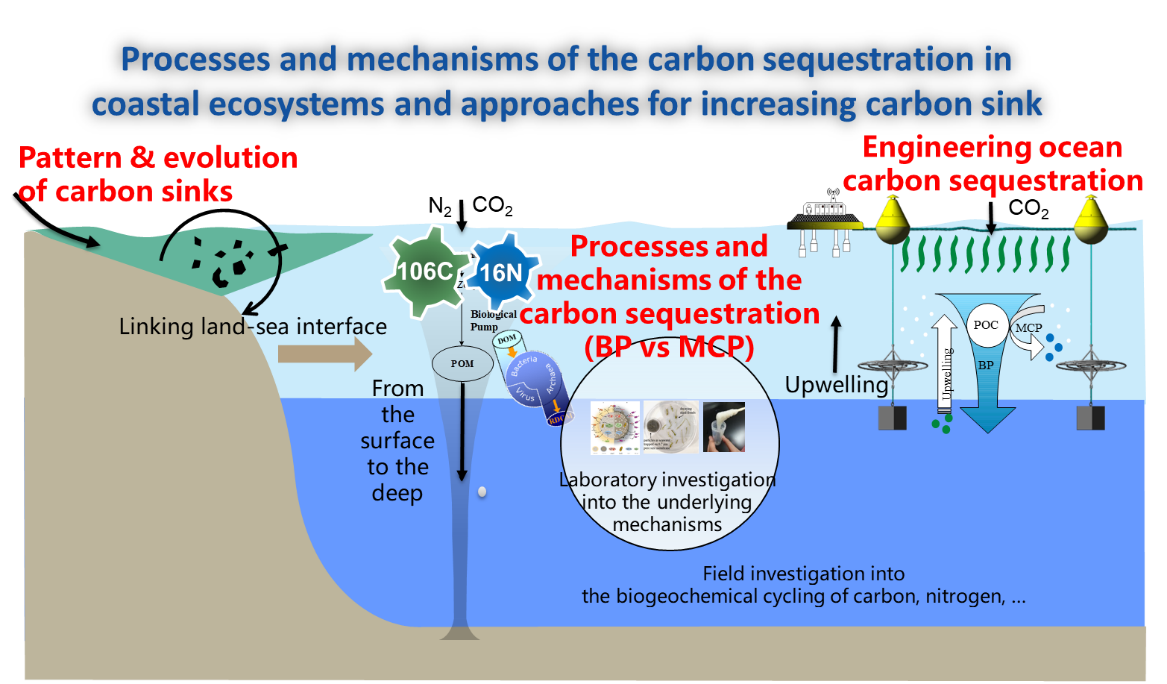Ocean is the largest carbon pool on earth, serving as the buffer of global climate change, absorbing about 1/3 of CO2 produced by human activities. Carbon sink captured by marine ecosystem is called the "Blue Carbon Sink" (hereinafter referred to as "blue carbon"), which is one of the most important mechanisms for the sea to store carbon. The initial form of blue carbon is visible plant carbon sequestration in the coastal zone. As a matter of fact, the invisible microorganisms (phytoplankton, bacteria, archaea, and protozoa), which have always been ignored, account for 90% of the marine biomass and constitute the main component of blue carbon. The marginal sea covers one third of the total territory of China, and it is of urgent need to explore the immense potential of carbon sinks. This project is comprised of four subprojects, aiming at the key processes and mechanisms of the carbon sequestration in coastal ecosystems and ways to increase ocean carbon sink. The project has made outstanding achievements in terms of community structure and ecosystem function in the carbon cycle, physiological and molecular mechanisms of refractory dissolved organic carbon production, re-establishment of the evolution process of ocean carbon sequestration in geologic history by sedimentary records, carbon sink dynamics in global warming scenario models, and theoretical and technical foundations for engineering ocean carbon sequestration. These outputs contribute to the sustainable development of the marine ecosystem and the national carbon neutrality target.

(Edited by Kai Tang)
(Editing Contact:xjz@xmu.edu.cn)